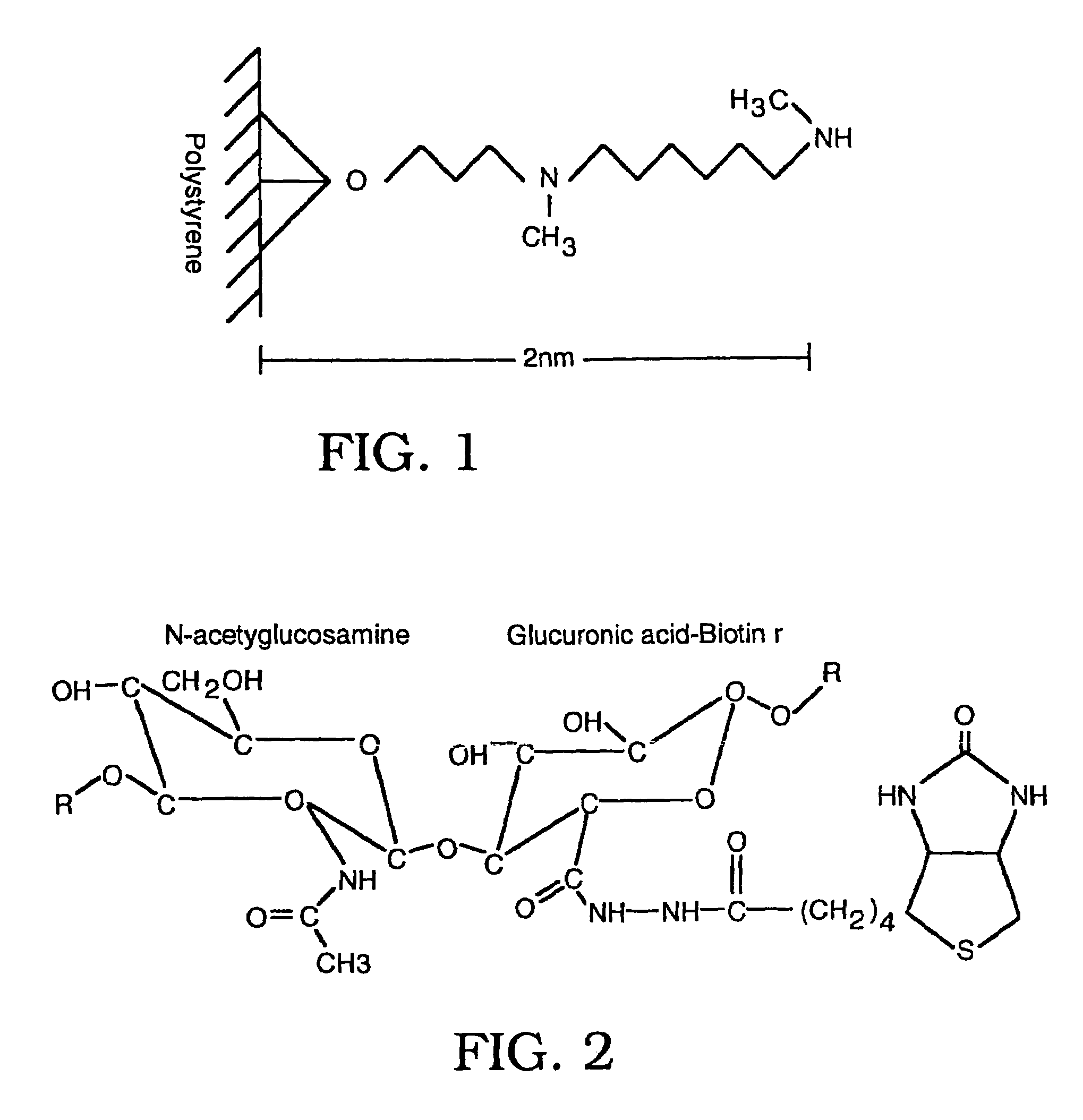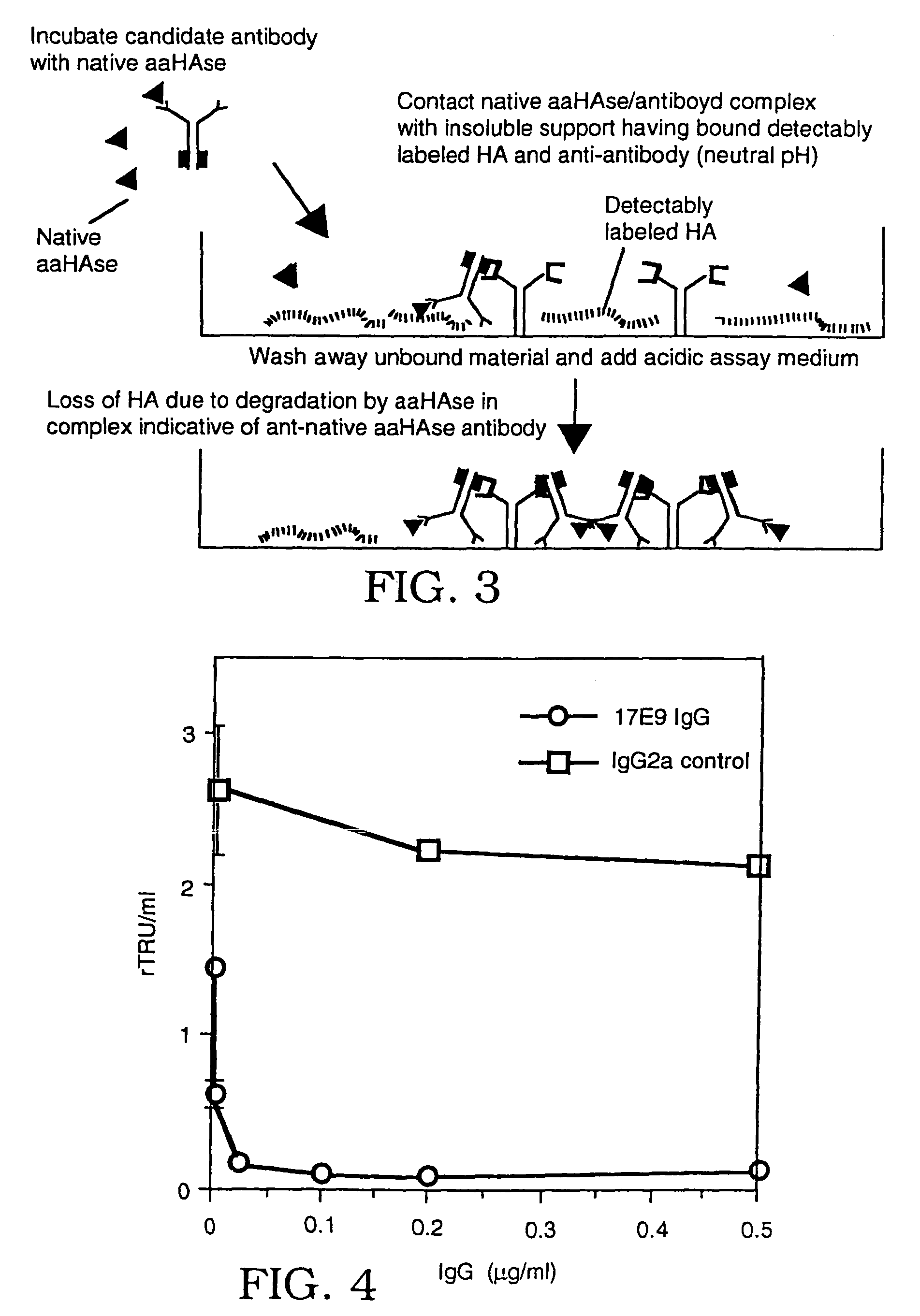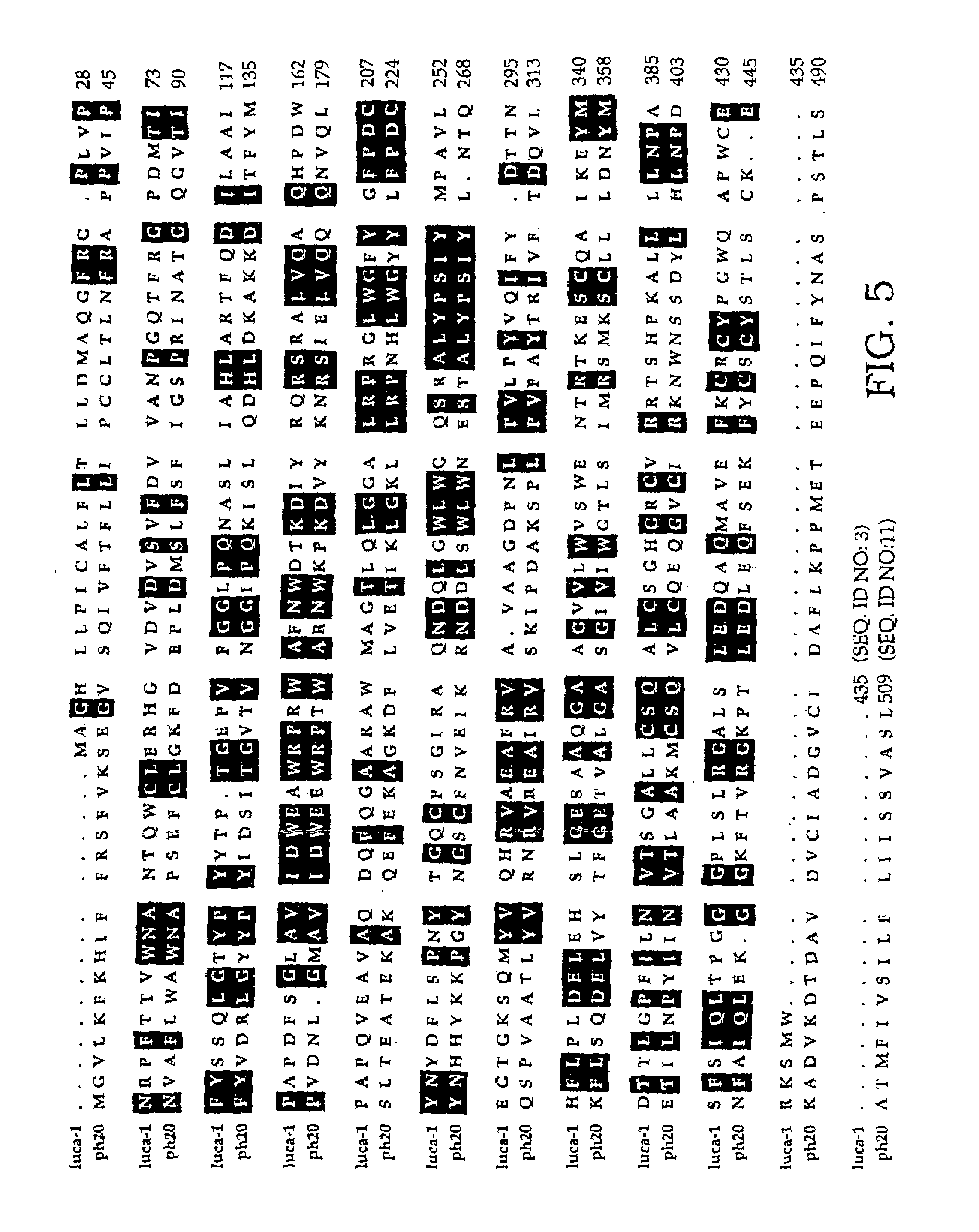Human plasma hyaluronidase
- Summary
- Abstract
- Description
- Claims
- Application Information
AI Technical Summary
Benefits of technology
Problems solved by technology
Method used
Image
Examples
example 1
Hyaluronidase (HAse) Activity Assay Using Covalently-Bound Biotinylated Hyaluronic Acid
[0146]Human umbilical cord hyaluronic acid (HA; ICN) was biotinylated through free carboxyl groups with biotin hydrazide (Pierce), coupled using 1-ethyl-dimethylaminopropyl carbodiamide (EDC, Sigma). 100 mg of hyaluronic acid (HA) was dissolved in 0.1 M Mes pH 5.0, and biotin hydrazide (Pierce), dissolved in DMSO, was added to a final concentration of 1 mM. EDC was dissolved into the HA / biotin solution to a final concentration of 0.03 mM and left stirring overnight at 4° C. Uncoupled biotin was then removed through exhaustive dialysis against distilled water (dH2O) and was stored at −20° C. at a final concentration of 1 mg / ml.
[0147]Up to about 10 days before performing the hyaluronidase assay, the biotinylated hyaluronic acid (bHA) was then covalently coupled to Covalink-NH microtiter plates (NUNC, Placerville, N.J.) at a final concentration of 5 μg of bHA / well with 9.2 μg / well Sulfo-NHS (Pierce) ...
example 2
Purification of Human Plasma Hyaluronidase Using the Biochemical Purification Method of the Invention
[0150]hpHAse was purified in a three-step biochemical procedure: 1) temperature-induced detergent hpHAse extraction of human plasma; 2) Fast Flow-S cation exchange chromatography; and 3) hydroxyl-apatite resin. Hyaluronidase activity and protein concentration were determined at each stage of purification, and the specific hyaluronidase activity calculated. Hyaluronidase activity was determined using the assay in Example 1. Protein concentration was determined by both absorbance at 280 nm and with the Biorad (Burlingame, Calif.) protein microassay kit (Tengblad 1979 Biochim. Biophys. Acta 578:281–289) in 96 well plates, using crystallized bovine serum albumin as a standard and read at 595 nM.
[0151]1) Temperature-Induced Detergent Phase Extraction
[0152]Two liters of outdated human plasma, obtained from either UCSF or Irwin Memorial blood donor centers, were routinely used for enzyme pu...
example 3
Screening Assay for Anti-Native Acid Active HAse (aaHAse) Antibodies
[0166]Biotinylated HA (bHA) was prepared as described in Example 1. Approximately 5 μg of bHA / well and 1.25 Ag / well of goat anti-mouse IgG (Jackson Immunolabs) were covalently coupled to Covalink-NH microtiter plates (NUNC, Placerville, N.J.) with 9.2 μg / well Sulfo-NHS (Pierce) and 6 μg / well fresh EDC overnight at 4° C. Unbound HA and goat antibody were removed through washing plates with wash buffer (PBS with 2M NaCl, 50 mM MgSO4, 0.05% Tween-20).
[0167]Anti-native acid active HAse (anti-native aaHAse) antibodies were screened by incubating candidate antibodies with a sample containing an acid active HAse in a neutral pH buffer composed of 1% Triton X-100 in phosphate-buffered saline (PBS). If the sample was a diluted sample (e.g., a diluted plasma sample), the neutral pH buffer additionally contained 5 mg / ml bovine serum albumin (BSA). The aaHAse-containing sample was incubated with the candidate antibodies to allo...
PUM
| Property | Measurement | Unit |
|---|---|---|
| Temperature | aaaaa | aaaaa |
| Fraction | aaaaa | aaaaa |
| Fraction | aaaaa | aaaaa |
Abstract
Description
Claims
Application Information
 Login to View More
Login to View More - R&D
- Intellectual Property
- Life Sciences
- Materials
- Tech Scout
- Unparalleled Data Quality
- Higher Quality Content
- 60% Fewer Hallucinations
Browse by: Latest US Patents, China's latest patents, Technical Efficacy Thesaurus, Application Domain, Technology Topic, Popular Technical Reports.
© 2025 PatSnap. All rights reserved.Legal|Privacy policy|Modern Slavery Act Transparency Statement|Sitemap|About US| Contact US: help@patsnap.com



